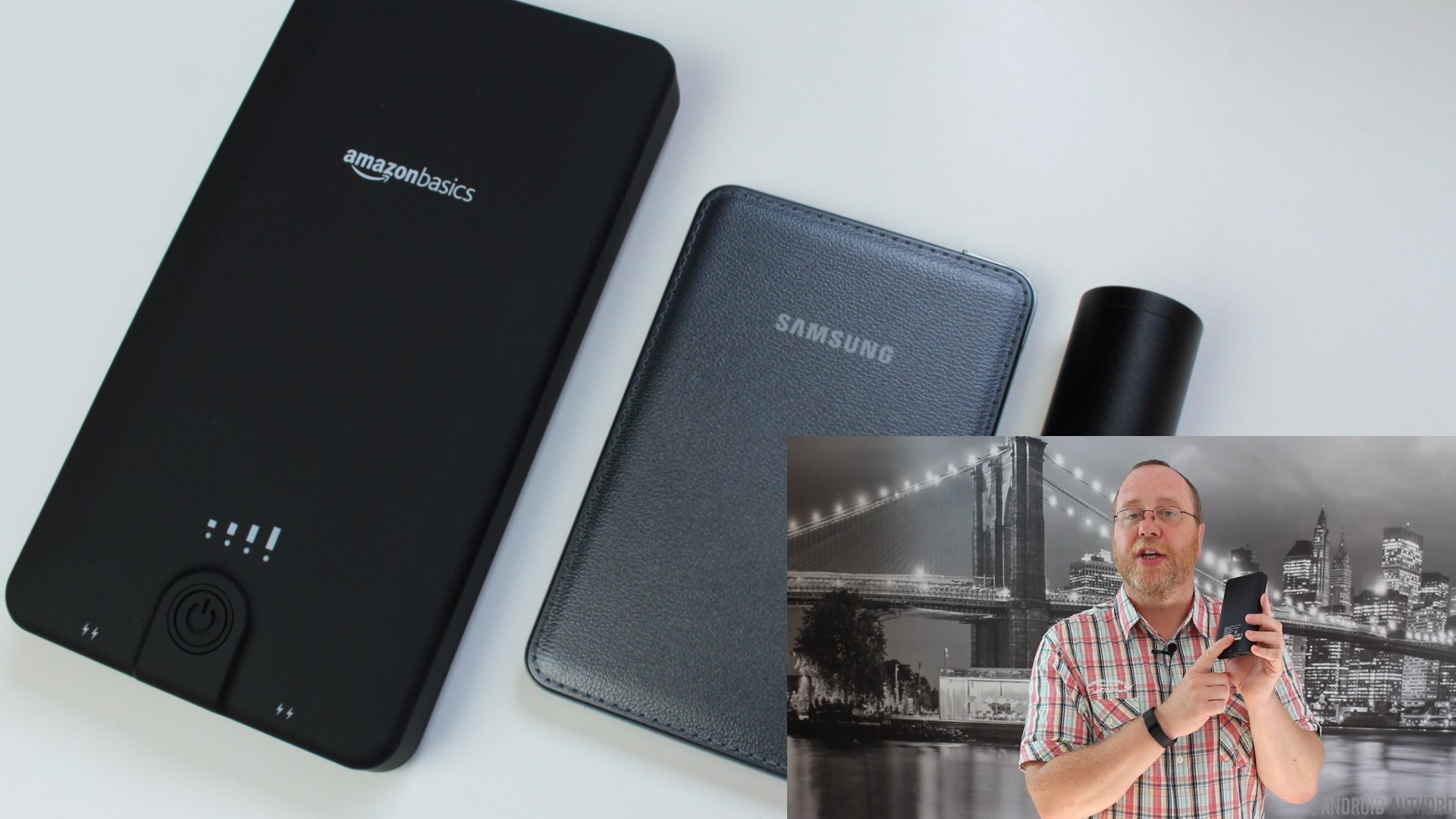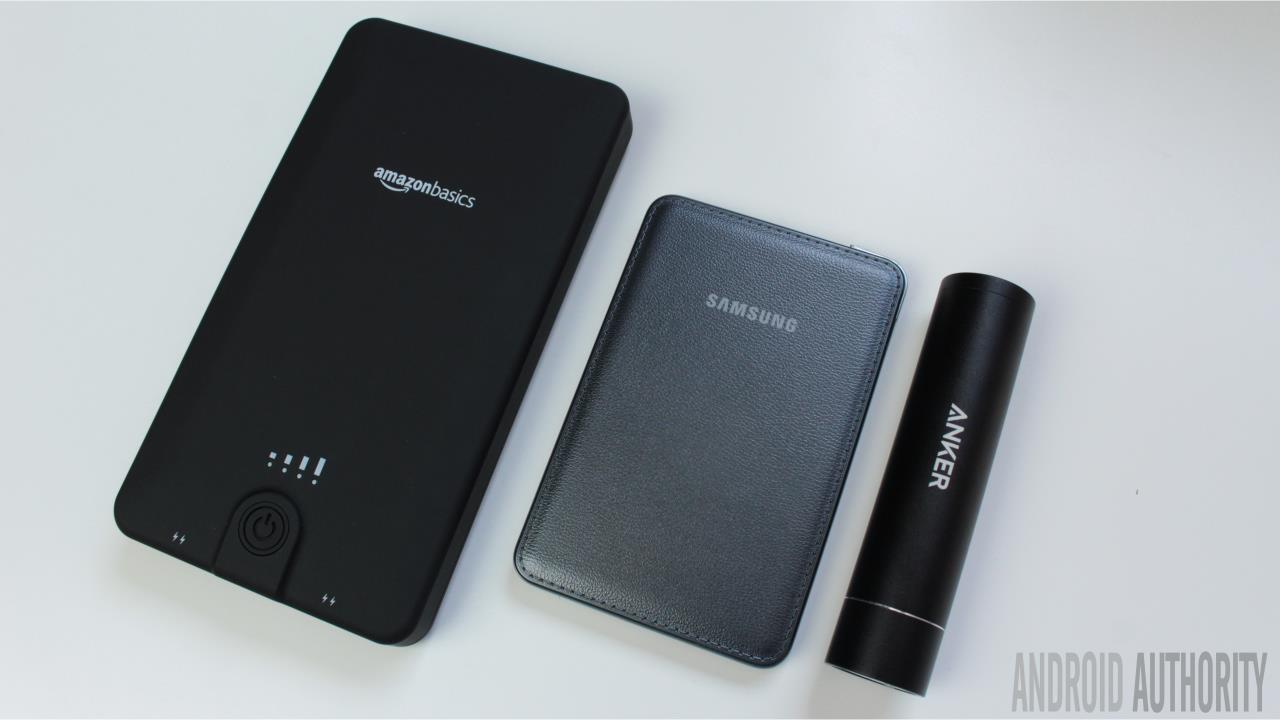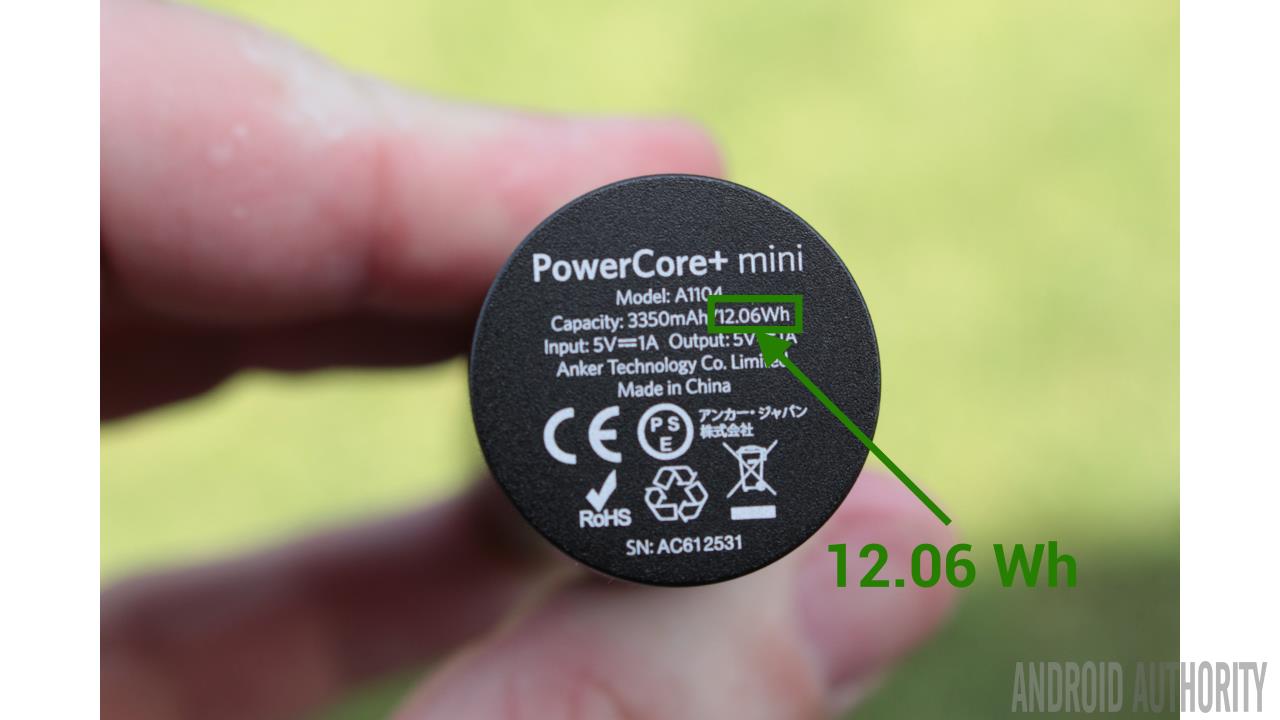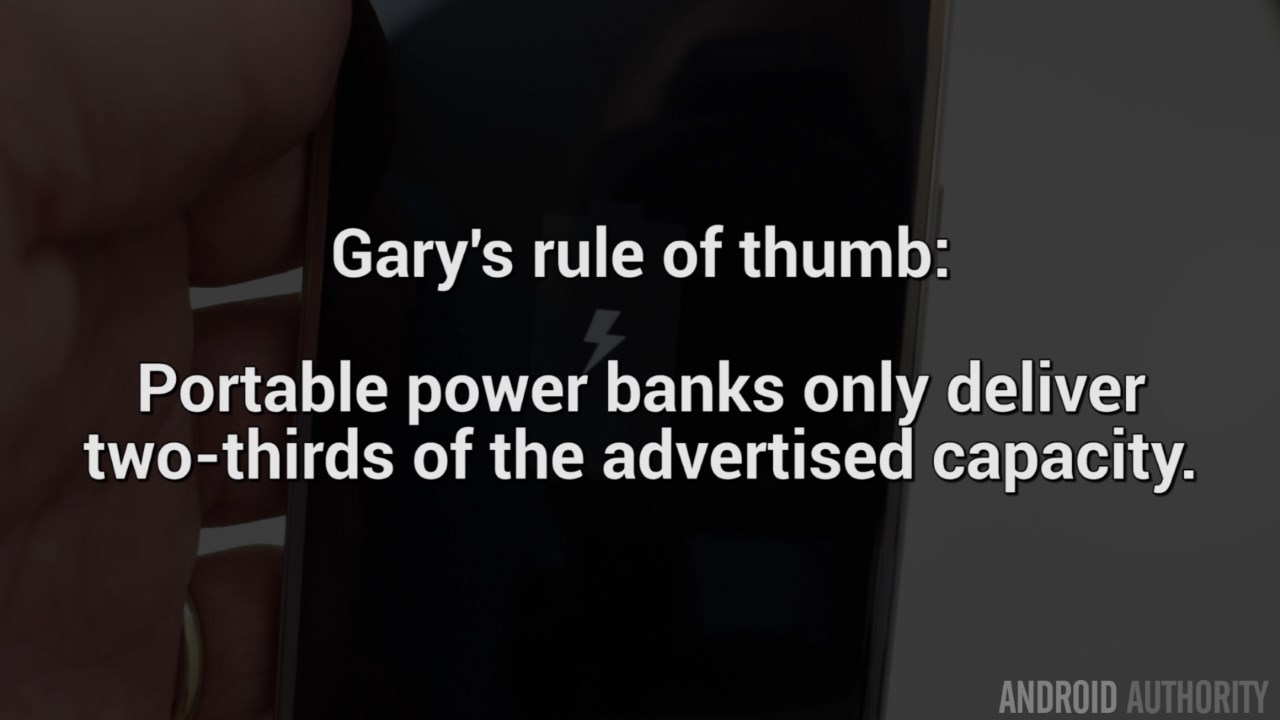Affiliate links on Android Authority may earn us a commission. Learn more.
Does a 3000 mAh portable power bank charge a 3000 mAh phone? - Gary explains

Portable power banks (external battery packs) are a popular accessory for smartphone users. They are basically a big battery in a plastic case with a USB port. You can use them to recharge you smartphone when you aren’t near mains electricity or when you want to charge your phone while on the go. The main characteristics of a portable charger is its capacity, quoted in milliamp hours (mAh). The come in all shapes and sizes from around 2,000 mAh to 20,000 mAh and beyond.
[aa_content_ad aa_single_ad_type=”single_mobile” aa_single_ad_pos=”center” ][/aa_content_ad]
[aa_content_ad aa_single_ad_type=”single_750_more” aa_single_ad_pos=”left” ][/aa_content_ad]
So if you have a device like the Samsung Galaxy S7, which has a 3,000 mAh battery, how much capacity do you need in an external battery pack? 3,000 mAh, right? Wrong! Let me explain.
Experiments

To see how much capacity is needed to recharge your smartphone we are going to need to do a little bit of experimentation plus some maths! First the experiments. I bought 3 portable power packs from Amazon: A 3,100 mAh Samsung Portable Charger, a 3,350 mAh PowerCore+ lipstick-sized portable charger from Anker, and a 16,100 mAh Amazon Basics portable power bank.
With each of the power packs fully charged I started charging some completely depleted phones and recorded how much each battery pack was able to deliver. For example I took the 3,100 mAh Samsung power bank and charged a Samsung Galaxy S7 from 0% to… Want to take a guess? The S7 has a 3,000 mAh battery and the 3,100 mAh battery pack can charge it to 71%. That is 2,130 mAh of charge.
I got similar results for the Anker PowerCore+. It managed to charge a phone with a 2,850 mAh battery from 0% to 82%, that is 2,337 mAh of charge from a 3,350 mAh rated portable charger. As for the Amazon Basics power bank, I needed to charge several phones to empty this beast! It managed to charge the Sony Xperia X from zero to full, and then a Moto G from nothing to 100%, and then the Samsung Galaxy Note 5 from 0% to 100%, and then the Samsung Galaxy S7, and finally it charged the Note 5 (which I had drained) from 0 to 43%. In total it managed to output 12,380 mAh.
| Charger | Capacity (mAh) | Wh | Tested capacity (mAh) |
|---|---|---|---|
| Charger Samsung Portable Charger (BP3100) | Capacity (mAh) 3100 | Wh 11.78 | Tested capacity (mAh) 2130 |
| Charger Anker PowerCore+ | Capacity (mAh) 3350 | Wh 12.04 | Tested capacity (mAh) 2337 |
| Charger AmazonBasics | Capacity (mAh) 16100 | Wh 59.5 | Tested capacity (mAh) 12380 |
As you can see, none of the power banks are delivering their full capacity. Doesn’t matter if it is a small power bank or a huge one, none of them hit the advertised mAh capacity. Why is that?
The maths
Each battery pack quotes its capacity in mAh, however most of them also quote a second number, the watt-hours (Wh). You don’t often find it on the website selling the charger, but on all three I did find it on the label of the unit. For example, the 3,100 mAh (that is 3.1 Ah) Samsung Portable Charger has a capacity of 11.78 Wh. Remembering that a Watt is calculated by multiplying Amps by Volts, then how many volts is this battery? 11.78 divided by 3.1 is 3.8 volts. Performing the same calculation on the other power banks gives an answer between 3.6 and 3.8 volts.

Generally the batteries in smartphones and the batteries in power banks run at 3.7 volts. But here is the thing, USB ports and the charging circuits work at 5 volts. When you connect your smartphone to the USB power on the battery pack it is actually working at 5V, not 3.7V. To go from 3.7V to 5V some conversion is needed. Since the Watt capacity is fixed, then going from 3.7V to 5V will decrease the number of amperes that the power bank can supply. That means that a 11.78 Wh battery (3,100 mAh at 3.8V) can deliver 2,356 mAh at 5V.
But, when the electricity reaches the phone it is converted again, from 5V down to probably 4.2V or 4.4V. So a 11.78 Wh battery (3,100 mAh at 3.8V) can deliver 2,804 mAh at 4.2V. Each of these conversions to step up the voltage and then to drop it down again causes power loss, anywhere from between 8% to 25% (depending on the design and quality of the converter).
[related_videos title=”Gary Explains” align=”left” type=”custom” videos=”696393,695569,694411,691474,683935,681421,679133″]You will have noticed that your phone can become warm on the back while charging, that is partly the power loss during the voltage conversion. The actual efficiency numbers aren’t known (other than what we can find through empirical testing), as it depends on the battery pack and on the phone being charged.
The Samsung battery pack managed 2,130 mAh in testing, which is less than the theoretical maximum of 2,804 mAh (at 4.2V). Therefore between the battery pack and phone there is a loss of around 24%. There are other unknowns like the quality of the batteries in the power banks and the real capacity level of those batteries,
When the same calculations are performed for the Anker and the Amazon Basics chargers we get close to the observed results. Each phone and power pack will be slightly different in terms of its efficiency, for example the bigger Amazon Basics charger did better in terms of efficiency, but remember that I had to charge several different phones to deplete it, and each of those phones has its own charging characteristics. We can come up with an approximate formula like this:
Actual capacity = ((power_bank_capacity_in_mAh * 3.7) / 4.2) * 0.8
To double check my results I hunted around on the internet for other examples of people charging their phones from portable power banks. From consumers asking why they didn’t see the full capacity of the power bank, to popular YouTube videos about battery packs, I gathered data and tested it against my calculations. The biggest unknown is the efficiency of the voltage conversion in the power bank and phone. However the formula above works… more or less!
Wrap-up

[aa_content_ad aa_single_ad_type=”single_mobile” aa_single_ad_pos=”center” ][/aa_content_ad]
[aa_content_ad aa_single_ad_type=”single_750_more” aa_single_ad_pos=”left” ][/aa_content_ad]
If you are being really lazy then just go with double, i.e. 3,000 mAh smartphone needs a 6,000 mAh battery pack for one charge. There will be some juice left over, but erring on the side of caution has its benefits.
One final thing, I would like to give a big shout out to Uki from the Android Authority forums who asked me this question a couple a months ago. Great question Uki, sorry it took so long to make the video about it!
What are your experiences with portable battery banks, do you get the same results as I do? Please let me know in the comments below.